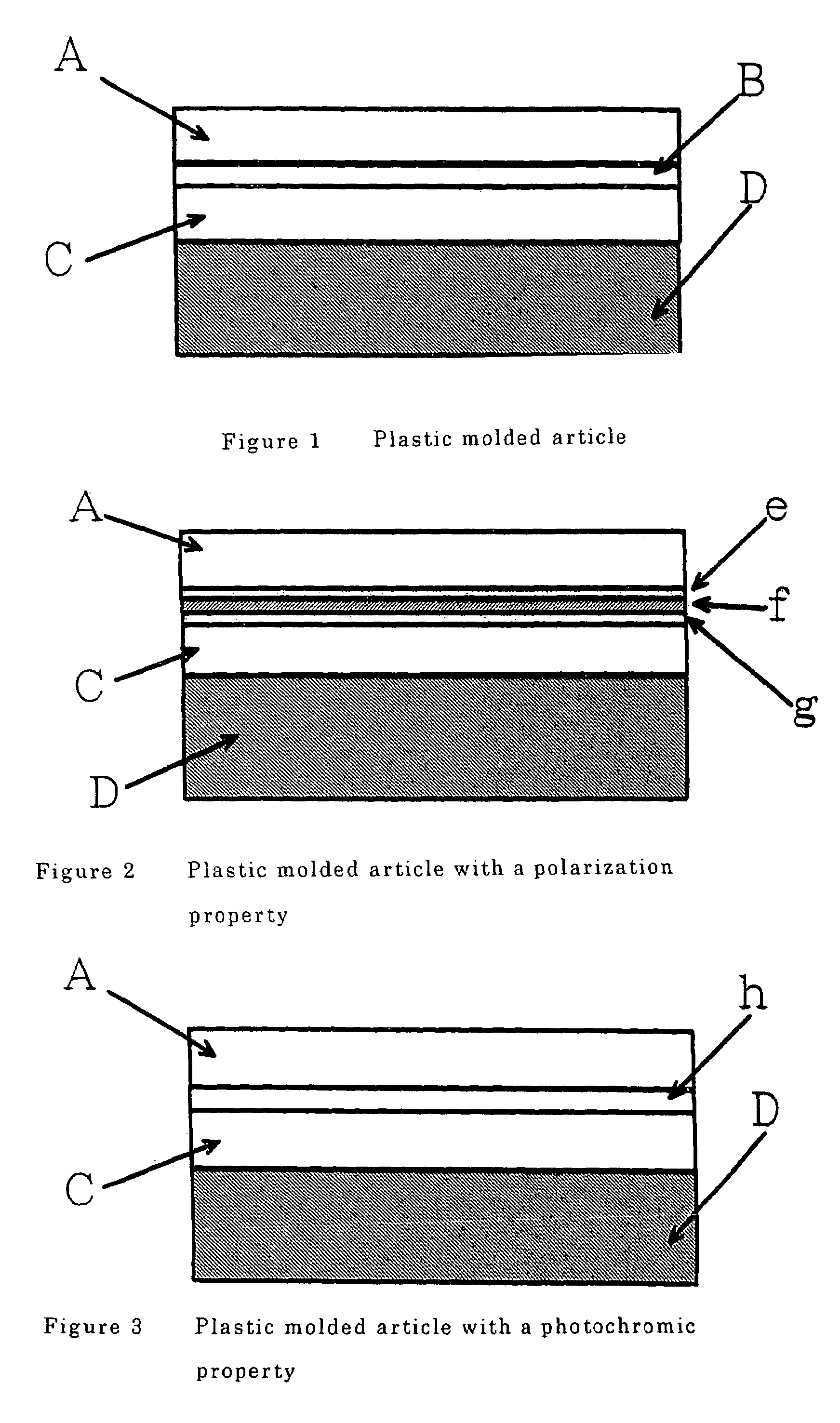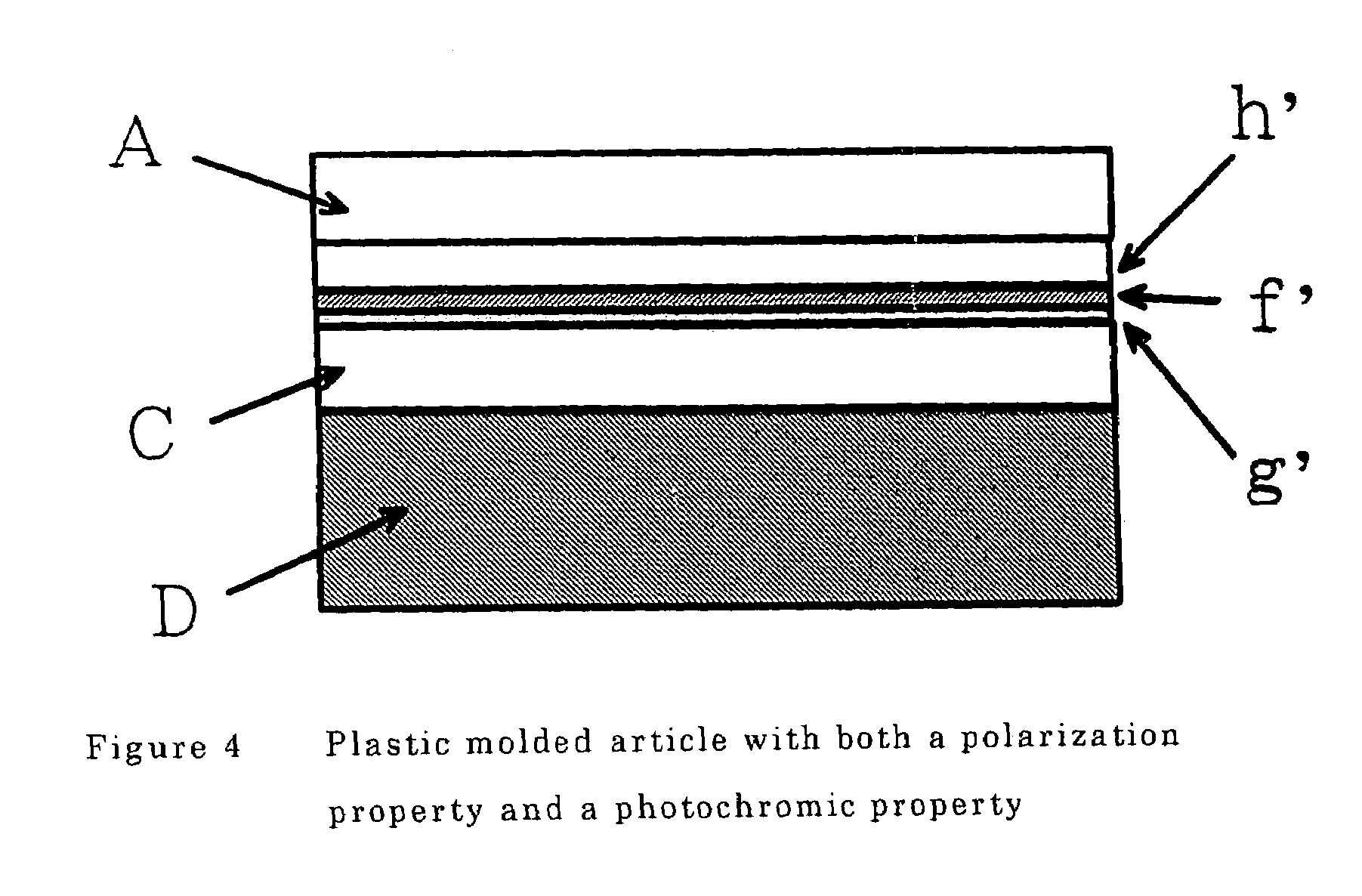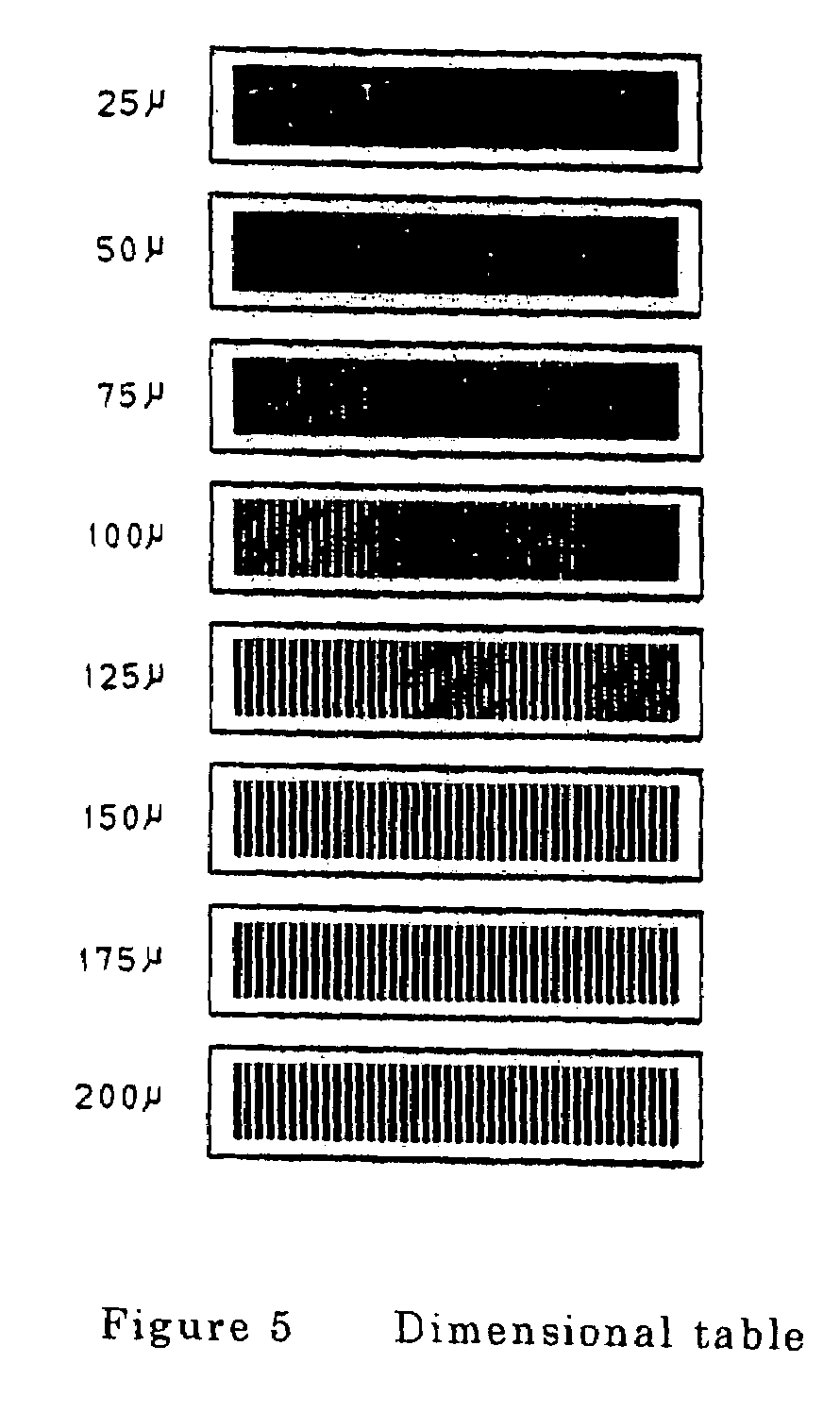Plastic molded product having photochromic characteristic and/or polarizing characteristics
a technology of polarizing characteristics and plastic molded products, applied in the direction of polarising elements, instruments, photosensitive materials, etc., can solve the problems of degradation of photochromic pigments, insufficient response speed and contrast of lens thus obtained, and difficulty in processing plastic photochromic sunglasses, etc., to achieve the effect of providing uv cutting potency
- Summary
- Abstract
- Description
- Claims
- Application Information
AI Technical Summary
Benefits of technology
Problems solved by technology
Method used
Image
Examples
example 1
(1) Preparation of Polarizing Film
[0102]A polyvinyl alcohol film, manufactured by Kurare k. k., trade name; Kurarevinylone #7500 was dyed at 35° C. for 6 minutes in an aqueous solution (dyeing solution) containing 0.45 g / L of Chlorantin fast red (C.I.: Direct Red 81), 0.40 g / L of Brilliant blue 6B (C.I.: Direct Blue 1), 0.45 g / L of Direct copper blue 2B (C.I.: Direct Blue 168), 1.20 g / L of Primuler blue 6 GL (C.I.: Direct Blue 202) and 0.35 g / L of Chrysophenine (C.I.: Direct Yellow 12) and then stretched 5 times to the direction of uniaxis in the dyeing solution.
[0103]Then, the above-mentioned film was immersed in an aqueous solution (treating solution) containing 0.30 g / L of nickel acetate tetrahydrate and 12.2 g / L of boric acid at a room temperature for 3 minutes in the state maintained stretching. Further, the film was taken out from the aqueous solution in the state maintained the tension and water washed and dried, and then subjected to heat treatment at 110° C. for 7 minutes.
[...
example 2
[0117]A plastic lens molded article was obtained in the same manner as in Example 1 except that a polycarbonate having a photoelastic constant of 48×10−12 m2 / N was used as a resin material for lens base material.
[0118]The used polycarbonate resin having a photoelastic constant of 48×10−12 m2 / N is a blend of an aromatic-aliphatic copolymerization polycarbonate and an aromatic polycarbonate in a weight blending ratio of 70 / 30, wherein the aromatic-aliphatic copolymerization polycarbonate was obtained by a melt trans-esterification process in the presence of 50 mol of 1,1-bis-(4-hydroxyphenyl) cyclohexane, 50 mol of tricyclo (5.2.1.0 2,6) decanedimethanol and a carbonic acid diester and the aromatic polycarbonate was derived from bisphenol A. The Abbe's number of the resin material is 36.
[0119]The flat sheet installed in advance was tight adhered to the surface of the molded article thus obtained and the molded article with good appearance was obtained. Further, the molded article had ...
example 3
(1) Preparation of Polarizing Film
[0121]It was performed in the same manner as in Example 1.
(2) Production of Laminate
[0122]A laminate having a total thickness of about 670 μm was obtained in the same manner as in Example 1 using two polycarbonate sheets having a thickness of 300 μm, Re of 80 nm and a photoelastic constant of 37×10−12 m2 / N.
[0123]The used polycarbonate having a photoelastic constant of 37×10−12 m2 / N is an aromatic-aliphatic copolymerization polycarbonate obtained by a melt transesterification process in the presence of 50 mol of 1,1-bis-(4-hydroxyphenyl) cyclohexane, 50 mol of tricyclo (5.2.1.0 2,6) decanedimethanol and a carbonic acid diester.
[0124]The laminate had transmittance=20.1% and polarization degree=99.8%
[0125]A plastic lens molded article was prepared in the same manner as in Example 1 using this laminate. Internal distortion of the plastic lens molded article thus obtained was small and no distortion was observed in its appearance and its appearance was v...
PUM
| Property | Measurement | Unit |
|---|---|---|
| thickness | aaaaa | aaaaa |
| thickness | aaaaa | aaaaa |
| refractive index | aaaaa | aaaaa |
Abstract
Description
Claims
Application Information
 Login to View More
Login to View More - R&D
- Intellectual Property
- Life Sciences
- Materials
- Tech Scout
- Unparalleled Data Quality
- Higher Quality Content
- 60% Fewer Hallucinations
Browse by: Latest US Patents, China's latest patents, Technical Efficacy Thesaurus, Application Domain, Technology Topic, Popular Technical Reports.
© 2025 PatSnap. All rights reserved.Legal|Privacy policy|Modern Slavery Act Transparency Statement|Sitemap|About US| Contact US: help@patsnap.com



